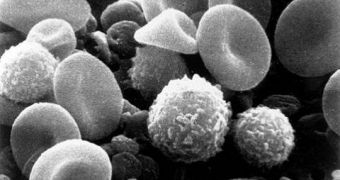Most people know that hydrogen peroxide has powerful antiseptic properties, in that it can kill most microbes and pathogens that find their way into scrapped knees, cuts or other open wounds. But researchers have now found that the compound not only treats the affected place, but also that it summons reinforcements from the immune system, and more specifically white blood cells, which in turn aid with the healing process as well.
When a cut occurs on the skin, the immune system dispatches highly-trained leukocytes (white blood cells) to the endangered spot, to stave off any possible infection. When reaching their destination, they scan the area for intruders. If any are found, they release a wave of very powerful, highly-reactive antimicrobial molecules, which wreak havoc among invaders. Out of the substances they expel in this process, called a “respiratory wave,” experts identified hydrogen peroxide as well, which means that the compound humans have looked so hard for was inside us all along.
In a very fortunate, yet totally accidental discovery, Harvard Medical School postdoctoral researcher and biologist Philipp Niethammer discovered while analyzing the severed tail of zebrafish that the hydrogen peroxide in their wounds appeared in bursts at the wound about 17 minutes before the leukocytes that were supposed to be producing them appeared too. Naturally, this can only mean that it's not the white blood cells that are producing the active substance, but the peroxide calling in reinforcements from the immune system, ScienceNow reports.
In order to ensure that the observations were correct, the expert and his team dipped a number of zebrafish larvae into a hydrogen peroxide-inhibiting solution. Then, they made incisions in the same spots as in the original research, and waited from an immune system response. Some 42 minutes later, an average of less than one white blood cell appeared at the site of the wound, as opposed to the 4 or 5 that would have normally arrived. This proved that it has the hydrogen peroxide that summoned the immune response, and not the other way around.
Researchers are currently focusing their efforts on understanding if the peroxide is directly responsible for bringing leukocytes to the cut, or if they are just a part of a longer chain of chemical reactions that does that. As soon as the answer is identified, they will finally be able to understand a small part of one of the most complex mechanisms in the human body, the immune system.

 14 DAY TRIAL //
14 DAY TRIAL //